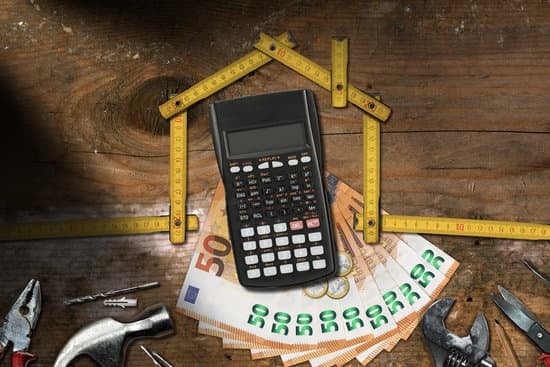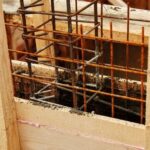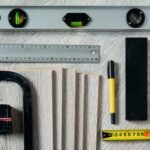When faced with the decision of whether or not to borrow from a 403b for home improvement, it’s important to weigh the potential benefits and drawbacks of such a decision. A 403b is a retirement savings plan for employees of certain tax-exempt organizations, public schools, and certain ministers. This type of account allows individuals to contribute pre-tax dollars towards their retirement, with the ability to potentially borrow from the account under certain circumstances.
Home improvement loans are a common way for homeowners to finance renovations or upgrades to their property. These loans can come in various forms, such as personal loans, home equity loans, or lines of credit. However, some individuals may consider borrowing from their 403b as an alternative source of funding for their home improvement projects.
In this article, we will explore the pros and cons of borrowing from a 403b for home improvement, the implications and considerations involved, as well as alternative options available. Understanding these factors can help individuals make informed decisions when it comes to financing their home improvement endeavors while also considering their long-term financial goals and retirement plans.
Pros and Cons of Borrowing From 403b for Home Improvement
Borrowing from a 403b retirement account for home improvement can have both pros and cons that should be carefully considered before making a decision. One of the main advantages is the potential for lower interest rates compared to traditional loans, as well as the ability to avoid credit checks or income verification.
Additionally, borrowing from your 403b allows you to repay the loan with interest, essentially paying yourself back rather than a lender. This can be appealing for those who want to make improvements to their home without taking on additional debt from a bank or other financial institution.
On the other hand, there are several drawbacks to consider when borrowing from a 403b for home improvement. One major disadvantage is the potential tax implications of taking out a loan from your retirement account.
If you are unable to repay the loan according to the terms set by the IRS, it could result in taxes and penalties that may outweigh any initial benefits of borrowing from your 403b. Additionally, taking out a loan against your retirement savings reduces the amount of money available for future growth, potentially impacting your long-term financial security during retirement.
Ultimately, it’s important to weigh these pros and cons carefully and consider how each factor may impact your individual financial situation before deciding whether to borrow from a 403b for home improvement. Consulting with a financial advisor can also provide valuable insight and guidance in making this important decision.
Understanding the Implications of Borrowing From 403b for Home Improvement
When considering borrowing from your 403b for home improvement, it’s crucial to understand the implications and consequences of such a decision. Here are some key points to consider:
- Impact on retirement savings: Borrowing from your 403b means taking money out of your retirement savings. This reduces the amount of funds available for your future and can hinder the growth of your nest egg.
- Tax implications: Withdrawals from a 403b are generally subject to income tax, so borrowing for home improvement may result in a higher tax bill for the year in which the funds are withdrawn.
- Penalties for early withdrawal: If you are under the age of 59½, withdrawing from your 403b may result in a 10% early withdrawal penalty, adding an additional financial burden.
In addition to these considerations, it’s important to evaluate whether borrowing from your 403b aligns with your long-term financial goals and objectives. Assessing the potential impact on your retirement and understanding the trade-offs involved is essential before making any decisions.
Ultimately, while borrowing from your 403b can provide immediate funds for home improvement projects, it’s crucial to weigh the long-term implications and financial repercussions. It’s advisable to consult with a financial advisor or planner to fully comprehend how borrowing from a 403b could affect your overall financial picture.
Alternatives to Borrowing From 403b for Home Improvement
While borrowing from a 403b for home improvement may seem like a convenient option, there are alternatives worth considering before making a decision. One alternative is applying for a home equity loan or line of credit. These options allow homeowners to use the equity in their home as collateral for a loan, which can often result in lower interest rates compared to borrowing from a 403b. Additionally, the interest on these loans may be tax-deductible, providing potential financial benefits.
Another alternative to borrowing from a 403b for home improvement is seeking out personal loans. Personal loans are unsecured loans that can be used for various purposes, including home renovations. While the interest rates on personal loans might be higher than those of home equity loans, they offer the advantage of not requiring collateral. This means that homeowners do not have to put their retirement savings at risk when opting for this financing option.
Lastly, homeowners can also consider using cash savings or taking advantage of government programs specifically designed to assist with home improvements. Programs such as the Federal Housing Administration (FHA) Title I Home Improvement Loan and energy-efficient mortgages offer homeowners affordable ways to fund their renovation projects without tapping into their retirement funds.
| Alternative Option | Key Details |
|---|---|
| Home Equity Loan/Line of Credit | Uses home equity as collateral, potentially tax-deductible interest |
| Personal Loans | No collateral required, but potentially higher interest rates |
| Cash Savings/Government Programs | Affordable ways to fund renovations without touching retirement funds |
Considering these alternatives before deciding whether or not to borrow from a 403b for home improvement is essential in making an informed financial choice that aligns with your long-term goals and priorities. It’s important to carefully evaluate each option and consult with financial advisors or lenders to determine the best approach for funding your home improvement project while safeguarding your retirement savings.
How to Determine if Borrowing From 403b Is the Right Choice for Your Home Improvement Project
When considering borrowing from your 403b for a home improvement project, it’s important to carefully assess whether this is the right choice for your specific situation. One of the first steps in determining if borrowing from your 403b is the right choice for your home improvement project is to evaluate your overall financial situation.
Consider factors such as your current income, other existing debts, and any potential upcoming expenses. It’s also crucial to take into account the interest rates and terms associated with borrowing from your 403b compared to other financing options available to you.
Another key factor in deciding whether to borrow from your 403b for a home improvement project is the anticipated return on investment (ROI) of the renovation or upgrade. Will the improvements increase the value of your home significantly? If so, borrowing from your 403b may be a more justifiable option. Additionally, consider the long-term impact on your retirement savings if you choose to borrow from your 403b. Will this withdrawal significantly affect your ability to retire comfortably?
It’s also essential to weigh the potential tax implications of borrowing from your 403b for a home improvement project. Depending on how you plan to use the funds, there may be tax consequences that could impact your overall decision.
Consulting with a financial advisor or tax professional can provide valuable insights into how borrowing from your 403b will affect your taxes and long-term financial goals. By thoroughly evaluating these factors and seeking expert advice, you can make an informed decision about whether borrowing from your 403b is the right choice for funding your home improvement project.
Potential Risks and Benefits of Borrowing From 403b for Home Improvement
Borrowing from a 403b for home improvement can have both potential risks and benefits that should be carefully considered before making a decision. One benefit of borrowing from a 403b is the ability to access the funds without needing to go through a credit check or pay high interest rates that may come with traditional loans.
This can be advantageous for individuals who need immediate funds for necessary home repairs or renovations. Additionally, the interest paid on the loan goes back into the borrower’s retirement account, potentially allowing them to recoup some of the money they borrow.
However, there are also risks associated with borrowing from a 403b for home improvement. One major risk is that individuals may end up reducing their retirement savings by taking out a loan, which can have long-term implications on their financial security in retirement.
Additionally, if the borrower is unable to repay the loan according to the terms outlined by their employer’s plan, they may face penalties and taxes on the unpaid amount. It is important for individuals to carefully weigh these potential risks against the benefits before deciding to borrow from their 403b for home improvement.
In order to make an informed decision about borrowing from a 403b for home improvement, it is crucial for individuals to thoroughly understand all aspects of their retirement plan and how borrowing will impact their future financial well-being. Consulting with a financial advisor or planner can provide valuable insight into whether this option is suitable for one’s unique circumstances and goals.
| Benefits | Risks |
|---|---|
| Access funds without credit check or high interest rates | Reduced retirement savings |
| Interest paid goes back into retirement account | Potential penalties and taxes if unable to repay |
Tips for Responsibly Borrowing From 403b for Home Improvement
Assess Your Financial Situation
Before deciding to borrow from your 403b for home improvement, it’s crucial to assess your overall financial situation. Take a close look at your budget, existing savings, and any other potential sources of funding for your home improvement project.
Consider the impact that borrowing from your retirement account will have on your long-term financial goals and retirement plans. It’s important to ensure that you’ll be able to comfortably repay the loan without jeopardizing your future financial security.
Understand the Terms of Borrowing From 403b
Before proceeding with a loan from your 403b for home improvement, take the time to fully understand the terms and conditions associated with this type of borrowing. Familiarize yourself with any applicable fees, interest rates, repayment schedules, and potential penalties for early withdrawal if you’re unable to repay the loan according to the agreed-upon terms.
Knowing these details will help you make an informed decision about whether borrowing from your 403b is the right choice for financing your home improvement project.
Create a Repayment Plan
It’s essential to create a solid repayment plan before borrowing from your 403b for home improvement. Determine how much you can comfortably afford to repay each month and establish a realistic timeline for paying back the borrowed amount.
Factor in any potential changes in your financial circumstances, such as job loss or unexpected expenses, and consider how these could affect your ability to repay the loan. By having a well-thought-out repayment plan in place, you can minimize the risk of defaulting on the loan and protect both your retirement savings and home equity.
Case Studies and Real-Life Examples of Individuals Who Borrowed From 403b for Home Improvement
Case Study 1: John’s Story
John, a middle-aged homeowner, decided to borrow from his 403b account to fund a major home improvement project. At first, he was attracted to the idea of accessing a large sum of money without having to go through a traditional loan application process.
However, he soon realized that the amount he could borrow from his 403b was limited and would not cover the full cost of the project. In the end, John had to supplement his 403b loan with additional financing, resulting in higher overall borrowing costs than anticipated.
Real-Life Example 1: Sarah’s Experience
Sarah, a young professional, opted to borrow from her 403b for a minor home renovation. While she appreciated the convenience and low interest rate associated with borrowing from her retirement account, she underestimated the impact on her long-term savings. After repaying the loan, Sarah found herself significantly behind in her retirement savings goals due to missed contributions during the repayment period.
Case Study 2: Robert’s Dilemma
Robert faced an unexpected financial emergency when his roof needed urgent repairs. With no savings set aside for such expenses, he turned to his 403b for help. Although the immediate relief was beneficial, Robert later felt burdened by the double-dipping effect of missing out on potential investment growth while simultaneously repaying the loan with interest.
These real-life examples demonstrate how borrowing from a 403b for home improvement can have both positive and negative implications on individuals’ financial situations. By taking into consideration these case studies and examples, homeowners can make more informed decisions regarding whether tapping into their retirement savings is truly worth it for their specific home improvement needs.
Conclusion and Final Thoughts on Whether You Should Borrow From 403b for Home Improvement
In conclusion, the decision to borrow from a 403b for home improvement should not be taken lightly. While it can offer a low-interest option for funding your renovation projects, there are significant implications to consider. The potential risks and benefits of borrowing from your retirement account must be carefully weighed against the alternatives before making a final decision.
It is important to remember that borrowing from your 403b should be seen as a last resort. Before tapping into your retirement savings, explore other financing options such as home equity loans, personal loans, or even saving up for the project over time. These alternatives may offer more flexibility and less impact on your long-term financial security.
Ultimately, if you do decide to borrow from your 403b for home improvement, it is crucial to do so responsibly. Avoid borrowing more than you need and have a solid plan in place for repaying the loan. Consider seeking guidance from a financial advisor who can help you navigate the potential implications and ensure that you are making an informed decision based on your individual circumstances.
Frequently Asked Questions
Is It a Good Idea to Borrow From Your 403 B?
Borrowing from a 403(b) retirement plan should generally be considered a last resort. While it can provide access to funds in times of need, it comes with potential pitfalls such as early withdrawal penalties, tax implications, and the impact on long-term retirement savings. It’s important to carefully weigh the pros and cons before making this decision.
What Is One Disadvantage of a 403 B Retirement Plan?
One disadvantage of a 403(b) retirement plan is that there are restrictions on when withdrawals can be made without penalty. Typically, if funds are withdrawn before age 59½, there may be early withdrawal penalties imposed by the IRS. This restricts the flexibility of accessing funds in case of financial hardship or unexpected expenses.
What Are the Cons of Withdrawing From a 403b?
The cons of withdrawing from a 403(b) include potential tax implications, penalties for early withdrawal, and a reduction in retirement savings which can have long-term consequences. Additionally, taking out funds prematurely means missing out on potential investment growth and compounding interest over time.
It’s important to consider these drawbacks before making the decision to withdraw from a 403(b).

I’m thrilled to have you here as a part of the Remodeling Top community. This is where my journey as an architect and remodeling enthusiast intersects with your passion for transforming houses into dream homes.





